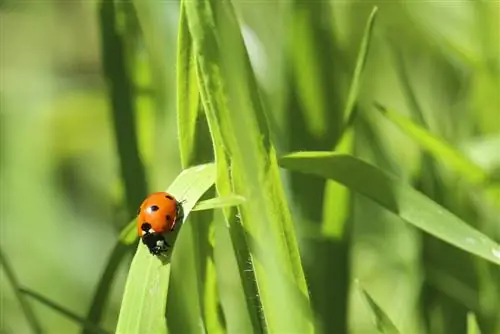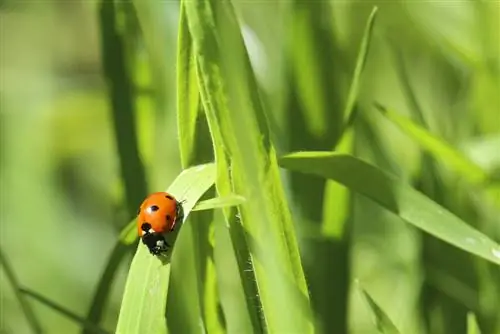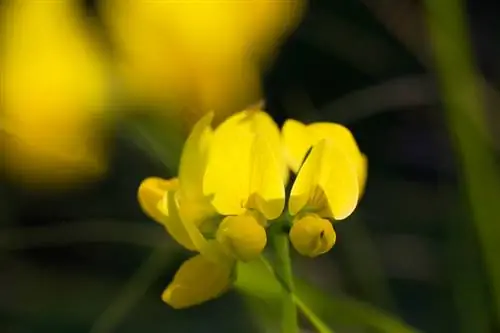- Author admin [email protected].
- Public 2023-12-16 16:46.
- Last modified 2025-01-23 11:22.
Ladybirds are welcome companions. In both popular belief and gardening culture, it has an excellent reputation as a messenger of heaven and a beneficial creature. We would like to introduce you to the cute little spotted beetle with all its interesting features.

What does the ladybug profile look like?
The ladybird is a useful beetle that occurs in different species around the world. Its habitat extends across forests, meadows, heaths and gardens, especially in warm, tropical areas. Over the course of its one- or two-year life cycle, it goes through the developmental stages of egg, larva, pupa and imago. As an adult beetle it eats aphids, making it a natural pest controller.
Why his name is Ladybug
The ladybug's pleasant name has its origins in a well-meaning popular belief: the role of the messenger of Mary, the Mother of God, is attributed to it. But people have also made other positive associations with the pretty beetle over the centuries: it is considered
- Patron saint of children
- as a wish fulfiller when flying away from the hand
- as a weather forecaster by taking off or staying put
- as a prophecy for virgins counting the years until their wedding
Its taxonomy
Ladybirds are an amazingly powerful axis in the animal world:
- They form their own family within the order of beetles
- This includes 360 different genera with over 6000 species worldwide
- In Europe there are 75 genera with approx. 250 species represented
The most common species here are the seven-spotted ladybird, the Asian ladybird, the twenty-two-spotted ladybird, the four-spotted ball ladybird or the ten-spotted ladybird.
By the way: It is a misconception that the number of points on the wing covers indicate the years of life of the beetle. Rather, the number varies depending on the species and does not change throughout the life of the adult beetle.
His living space
The ladybird is distributed worldwide, but feels most comfortable in warm, tropical to subtropical climates. That's why it's represented there much more diversely than here in Europe. It lives in forests, meadows, heaths and moors, but fortunately also in our gardens. Especially, of course, in those that are farmed as close to nature as possible and with a lot of plant diversity.
How he lives
Ladybirds usually have a one-year, but sometimes two-year life cycle. Depending on weather and food conditions, an adult beetle can survive a second winter. From this you can see that ladybirds are among the beetles that overwinter as imagos and not as pupated larvae.
But they actually go through the usual development stages:
- Egg
- Larva
- Doll
- Imago
Egg
At the end of April to the beginning of May, the females lay up to 400 eggs, usually on the underside of the leaves of suitable plants. Depending on the weather, it takes 5-8 days for the larvae to hatch.
Larva
As a larva, the ladybird lives for 30 to 60 days, during which it sheds its skin 3-4 times. Depending on the species, the larvae can look very different.
Doll
After the larval development stages have been completed, the pupation period comes. The larva retreats into a mummy pupa and clings to leaves, twigs or trunks in a curved manner. The metamorphosis into the finished beetle takes 6-9 days.
Imago
The hatched beetle is not yet fully formed. For example, its outer wings still have to harden, which is where the species-specific spot coloring comes from.
Ladybirds as beneficial insects
One more word about its beneficial function: The ladybird is above all a diligent aphid destroyer, which is very beneficial for hobby gardeners.






